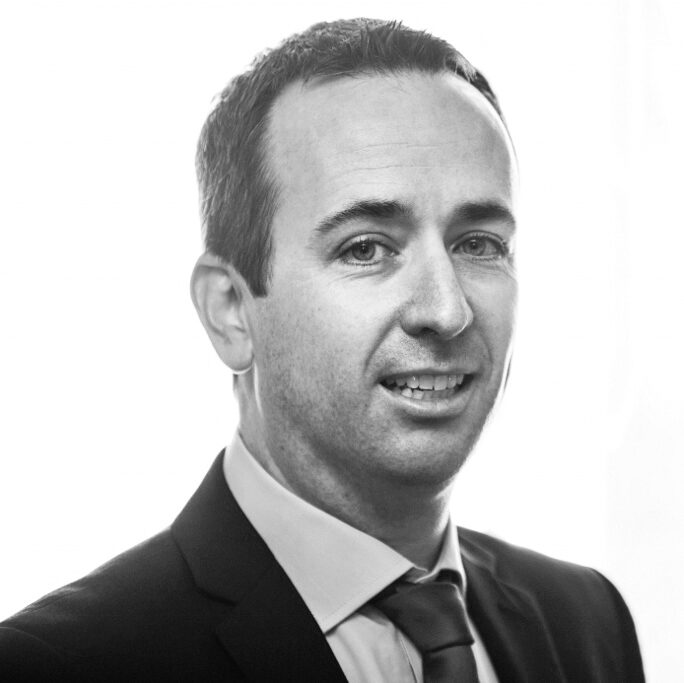Home » Auto-enrolment: What IPU members need to know

Since Moore Wealth Management first started advising members of the pharmacy community 20 years ago, auto-enrolment (AE) has hovered in the background. Now with a confirmed start date of 1 January 2026 under the title ‘My Future Fund’, employees aged 23–60 who earn above a threshold will be automatically enrolled in a pension scheme, with contributions from employee, employer, and the State.
Employers need to be aware of the upcoming costs and associated administration of employee contracts, policies and procedures which are significant.
‘Eligible’ employees will be anyone between the ages of 23 and 60 earning €20,000 or more. Those outside these ages will be allowed to opt-in. This will be a semi-mandatory scheme designed to allow the employee to opt-out, with a window after six months, in months seven and eight. During this window, the employee will be entitled to a refund of their contributions, but the employer contributions and the State top-up remain invested. To prevent inertia in all instances, employees will be re-enrolled every two years and it’s important to note that the €20,000 of income can come from multiple employments.
Any contribution to a pension of any amount from an employer through payroll will exempt the employee from auto-enrolment, the amount does not matter initially — it could be less than the AE contribution. If you currently have a scheme, it’s likely to be voluntary and now you have a situation where anyone not in that pension scheme through payroll, will be auto-enrolled on meeting the criteria, which could mean you are managing two schemes.
Normally, someone on a probationary period does not go into a pension, but if they meet the AE criteria of an eligible employee as outlined above, they will be auto-enrolled from their first pay packet. The intention is that standards will be brought in circa 2032 with the determination of best pot wins; this means determining whether an employee should be in AE or your existing arrangement, with regard to which will deliver the best outcome for the employee. How that is determined is unknown at this stage.
This flow chart is from the National Auto Enrolment Savings Authority (NAERSA) and promises a seamless process for employers.
Image 1: Auto-enrolment process
Source: National Auto Enrolment Savings Authority
Employers won’t have the responsibility for who should or shouldn’t be in the scheme; this will be handled by NAERSA. Auto-enrolment will be set out in legislation and therefore will be an employment right:
It’s important for employers that you make yourself aware of your obligations and responsibilities towards your employees.
One of the key questions you’re likely to have is how much this will cost you. To help everyone adjust and get used to this extra cost, contributions will be phased in over a decade. Contribution rates start at 1.5 per cent of gross overall earnings up to €80,000 from both the employer and employee. The system is supported by a State top up of €1 for every €3 that the employee contributes. The rates will increase every three years by 1.5 per cent until year 10 when they reach 6 per cent Employer, 6 per cent Employee and 2 per cent state top up.
Salaries are one of pharmacies’ biggest costs and from Q1 2026 every €100,000 of salary you pay to employees not already in a pension scheme is an additional cost of €1,500 in years one to three, rising to €3,000, €4,500 and €6,000 in years four, seven and 10. You will be able to claim corporation tax relief on these payments.
To be clear, this phasing in will take place in the first decade of auto-enrolment, not in the first ten years of an employee’s career. All new employees joining after year ten (2036) will start at the 6 per cent rate.
For the first three years, employees will see 1.5 per cent of their gross pay taken from their net pay, rising over the timelines above. This is important to note, as AE does not operate from a tax relief perspective as a normal pension. For example, an employee earning €50,000 will see €750 (1.5 per cent) annually or €62.50 monthly less in their net pay in the first three years. Under a standard pension, the net difference would be €37.50 for the same employee.
Employers need to ensure HR policies and procedures are up to date. AE constitutes a change in an employee’s terms of employment. You will need to update:
This is a large body of work that most are unaware of.
Why would anyone knowingly subscribe to an inferior system?
Anyone paying tax at 40 per cent entering AE is making a mistake. Under a standard pension, they would pay €60 to get €100 into their fund. Under AE, this cost increases to €75, and they have an inferior and inflexible scheme. It’s baffling that the Government has allowed a new scheme that has a different incentive than a standard pension, and against the advice of the ESRI and the OECD, to be established. However, this is what they have done and it’s going to cause a headache for employers.
Advantages of standard pensions:
The country is close to what is guided as full employment and you are well aware the hunt for talent is real and good staff are in demand. Work from home is not a benefit option employers can offer so employers in pharmacy are increasingly turning to pensions and income protection to attract and retain staff.
Vesting is a key feature of traditional pensions. This means the employer has the right to a refund of contributions for up to 24 months if an employee leaves. This is the only protection for employer contributions and only available through traditional pensions. In AE, they are the members’ contributions from day one, and no employer refund applies.
Protect your business and contributions by utilising the superior pensions already available. This is an unavoidable cost coming down the line and you have time to get ahead of this by offering employees a better scheme that will produce better outcomes in every aspect. Bear in mind that the first payroll scan to look for eligible employees takes place in December. If a scheme is not in place by then, your employee(s) are in AE.
Colm Moore is a CERTIFIED FINANCIAL PLANNER™ with Moore Wealth Management. In 2025 they will have been advising the pharmacy community for twenty years. He can be contacted on 086 860 3953. For more see mwm.ie.
Moore Wealth Management in conjunction with the IPU are running a webinar on Wednesday 15 October to go over this important topic in more detail. Please scan the QR Code to book your place.
Colm Moore

Managing Director, Moore Wealth Management
Highlighted Articles